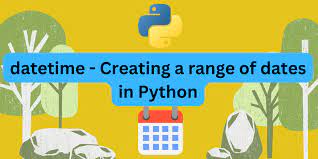let’s create a real-world example of iterating over dates in Python. In this example, we’ll write a program that generates a list of dates within a specific range and then performs some action for each date. For simplicity, let’s say we want to print the dates in a given month. We will use the datetime module in Python for date manipulation.
Here are the steps:
- Import the
datetimemodule: First, you need to import thedatetimemodule, which provides classes for manipulating dates and times.
import datetime- Define the start and end dates: Specify the range of dates you want to iterate over. For this example, let’s choose a month, say, October 2023.
start_date = datetime.date(2023, 10, 1)
end_date = datetime.date(2023, 10, 31)- Create a loop to iterate over dates: You can use a
forloop to iterate over dates from the start date to the end date.
current_date = start_date
while current_date <= end_date:
print(current_date)
current_date += datetime.timedelta(days=1)current_dateis initialized to thestart_date.- The loop continues as long as
current_dateis less than or equal toend_date. - Within the loop, we print the
current_date. - We then increment
current_dateby one day usingdatetime.timedelta(days=1).
- Run the program: When you run this program, it will print all the dates from October 1, 2023, to October 31, 2023.
Here’s the complete code:
import datetime
start_date = datetime.date(2023, 10, 1)
end_date = datetime.date(2023, 10, 31)
current_date = start_date
while current_date <= end_date:
print(current_date)
current_date += datetime.timedelta(days=1)When you run this code, you will get the following output, which shows all the dates in October 2023:
2023-10-01
2023-10-02
2023-10-03
...
2023-10-30
2023-10-31This is a simple example of how to iterate over dates in Python and perform some action for each date in a real-world scenario. You can modify the code to perform different actions based on your specific needs.
